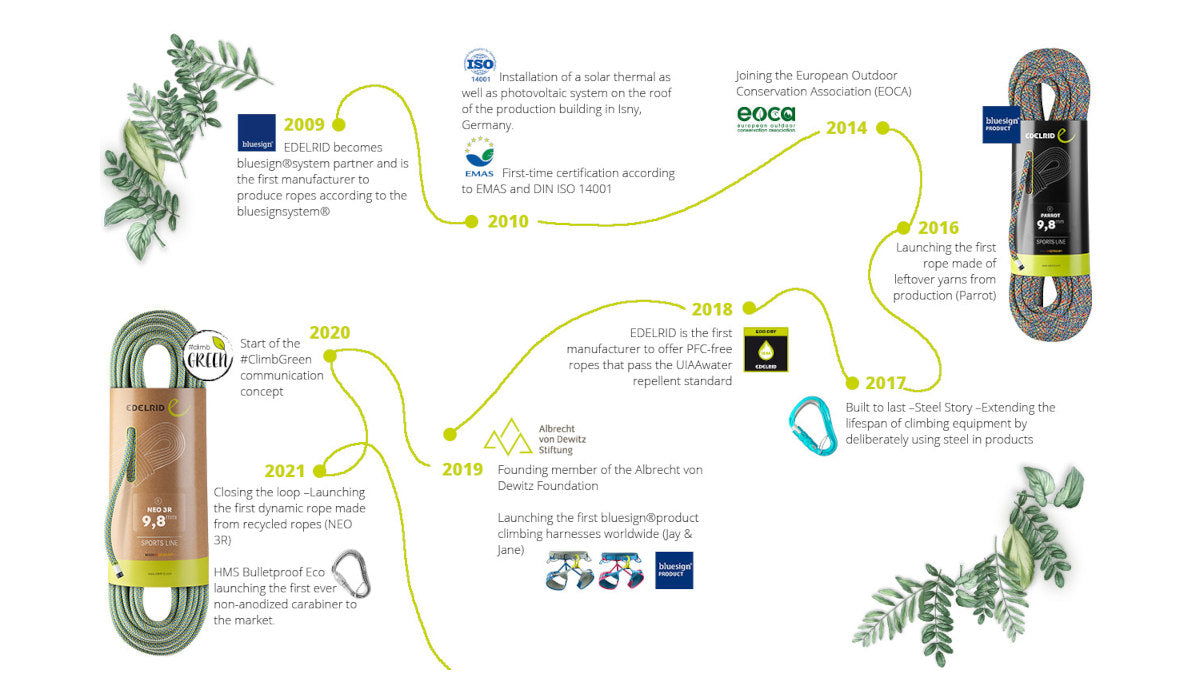Who are they?
Founded by businessman come alpinist, Julius Edelmann (Edel), and technician, Carl Ridder (Rid), in 1863 – Edelrid are the oldest mountain sports company after Mammut, who were formed a year earlier. Based out of Isny, Southern Germany, Edelrid brought their German engineering prowess to the world of climbing equipment and technology, utilising it to great effect in creating an esteemed lineage of the most efficient kit the market has seen.
What are Edelrid known for?
Innovative, sport defining gear that hasn’t just transformed the way kit is made today but does it all with a minimal amount of fuss – the typical German way. Initially, Edelrid made cord and in 1880 developed the first version of technical braiding using fishing line (braiding any rope/cord-like materiel makes it stronger). It is no surprise then, that in 1953 Edelrid developed the rope construction we see in the climbing ropes sold and used today. This is called a ‘Kernmantle rope’ and constitutes twisted parallel core (kern) fibres surrounded and protected by a braided sheath (mantle). Nowadays Edelrid make a whole host of kit, from sport climbing and via ferrata equipment to innovative belay devices like the MegaJul.
Where are Edelrid products made?
All their climbing ropes, slings and some harnesses are made in Germany. Other items are made in countries across the Far East.
Environmental action
Edelrid place sustainability and climate responsibility at the core of their corporate plan. From the first BLUESIGN approved rope to a dynamic rope made entirely from old recycled ropes, Edelrid are constantly evolving and adapting to meet the highest sustainability standards possible.

What sets Edelrid apart?
What doesn’t? Edelrid are, in many respects, an industry leader. Steeped in heritage but still conjuring up revolutionary inventions to this day, Edelrid are at the forefront of the climbing gear world. This is epitomised by their speciality, the humble climbing rope. Having invented the ropes we use and abuse today, Edelrid are still at the forefront of rope creation; redefining what a climbing rope is capable of whilst doing everything possible to limit its impact on the environment.















